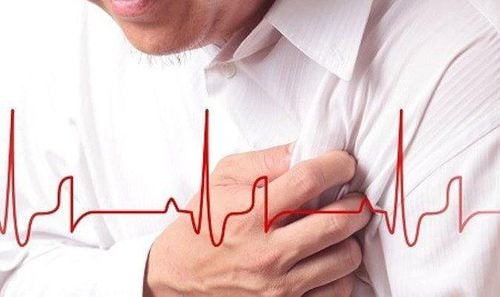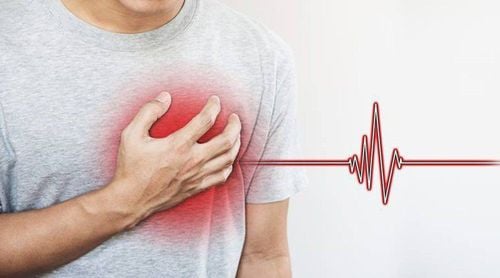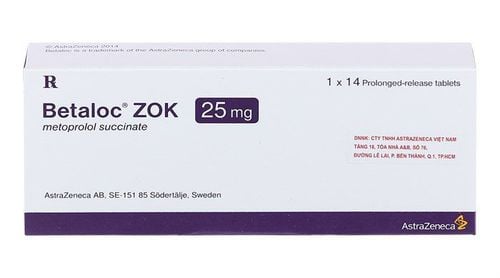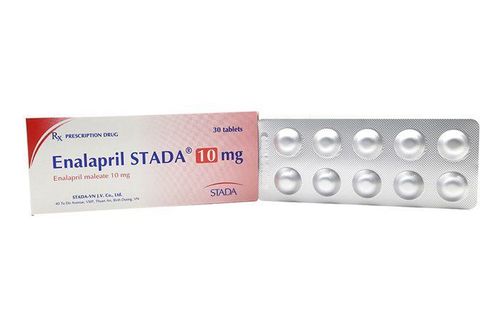This is an automatically translated article.
Heart failure can be the result of many different diseases. Faced with a patient with heart failure, it is necessary to understand the mechanism leading to the current state of the disease.
1. Overview of heart failure
Heart failure is a major problem of mankind and a burden of disease in countries. The number of patients with heart failure is constantly increasing over the years. According to the American Heart Association, each year in the United States, about 550,000 new patients are diagnosed with heart failure. Heart failure is the reason 12-15 million Americans visit health care facilities and 6.5 million days in hospital each year. In Vietnam, an estimated 1.6 million people need treatment for heart failure, according to the Society of Cardiology.
Heart failure can be the result of physical damage or dysfunction of the heart. This is a complex clinical syndrome resulting in impaired capacity of the ventricles to receive blood during diastole or to eject during systole. Heart failure is a consequence of many different diseases such as coronary artery disease, hypertension, heart valve disease, arrhythmia, thyroid disease, etc. In which, coronary artery disease is the most common cause, accounting for the proportion rate above 50%. The next most common causes of heart failure are hypertension and valvular disease.
Heart failure greatly affects the patient's quality of life. The main clinical manifestations of heart failure are fatigue, dyspnea, and fluid retention. Patients often feel tired, sleepy, anorexia, frequent nocturia, abnormal weight changes.
Along with that, the patient may have many breathing symptoms such as rapid breathing, shallow breathing, shortness of breath during exertion, paroxysmal nocturnal dyspnoea,... Fluid retention will lead to pulmonary congestion or peripheral edema in the legs, abdomen, genital area. However, not all of these symptoms are present in the same patient. Some cases may not be able to afford exercise but no or very little manifestations of fluid retention; Some other cases have peripheral edema but atypical dyspnea and fatigue.

Suy tim là một vấn đề lớn của nhân loại và là gánh nặng bệnh tật của các quốc gia
2. 4 mechanisms of heart failure
In heart failure, cardiac output is reduced. The body will respond to try to maintain this output by compensating mechanisms of the heart and extracardiac systems. However, when these compensatory mechanisms are exceeded, heart failure occurs with many serious consequences. 4 mechanisms of heart failure include:
2.1. Volume overload (increased preload)
Preload determines the degree of myocardial fiber elongation during diastole. Factors affecting preload include venous return to the ventricles and ventricular dilatation.
Factors that can cause volume overload (increased preload) include:
Increased salt and water intake; The patient does not strictly comply with the treatment, does not use the correct drugs according to the doctor's instructions; Having diseases such as kidney failure, hyperthyroidism, acute valve regurgitation, fever,... 2.2. Pressure overload (increased afterload)
Afterload is defined as the resistance of the arteries to the contraction of the ventricles, the higher the resistance, the greater the contractility of the right ventricle. Factors that cause pressure overload (increased afterload) in patients include:
Uncontrolled hypertension; Pulmonary embolism . 2.3. Loss of myocardium (decreased myocardial contractility)
Decreased myocardial contractility will lead to heart failure, the lower the myocardial contractility, the more severe the heart failure. Factors that can lead to sudden decrease in myocardial contractility such as: acute myocardial infarction, drug poisoning,...
2.4. Diastolic dysfunction (decreased filling)
Diastolic dysfunction due to impaired left ventricular filling due to increased rigidity or decreased relaxation of the cardiac chambers. Possible causes of diastolic dysfunction such as: tachycardia, pericardial disease,...

Sức co bóp cơ tim càng giảm thì tình trạng suy tim càng nặng nề
3. Notes when treating heart failure
Heart failure is a chronic disease that requires lifelong treatment. The goal of heart failure treatment is to reduce the risk of death, besides, treatment also reduces symptoms, reduces hospitalization rates, slows progression, prevents complications, and improves the quality of life of people. sick. In order to effectively treat heart failure, patients need to strictly follow the doctor's treatment instructions, use drugs at the prescribed dose and time. Simultaneously combined with non-drug treatment measures such as:
Diet control: Patients with heart failure should limit salty foods, increase a bland diet to prevent symptoms of fluid retention; limit fluid intake in patients with severe heart failure; limit alcohol intake,... Stop smoking: Studies have shown an association between smoking cessation and reduced morbidity and mortality from heart failure. Close weight monitoring: Weight gain in patients with heart failure is often associated with increased fluid retention and worsening heart failure. Therefore, patients should be advised to monitor their weight daily. In addition, physical exercise is also an important measure that contributes to improving the effectiveness of treatment and improving the quality of life of patients with heart failure. Many studies have shown that appropriate physical exercise reduces mortality, reduces hospitalizations, and improves exercise tolerance.
As soon as heart failure symptoms appear, the patient needs to go to a reputable hospital for examination and timely treatment plan. Currently, Cardiovascular Center - Vinmec International General Hospital is one of the leading centers in the country for examination, diagnosis, screening and treatment of cardiovascular diseases. With the convergence of a team of experienced, reputable experts in the field of surgery, internal medicine, interventional cardiac catheterization and the application of advanced techniques in the diagnosis and treatment of diseases. Cardiovascular management, along with a system of modern equipment, on par with the most prestigious hospitals in the world such as: 3 Tesla MRI machine (Siemens), 640 CT machine (Toshiba), other equipment Advanced endoscope EVIS EXERA III (Olympus Japan), Avace high-end anesthesia system, Hybrid operating room according to international standards... The Cardiovascular Center at Vinmec International General Hospital has achieved many successes. work and gain the trust of a large number of patients.
Please dial HOTLINE for more information or register for an appointment HERE. Download MyVinmec app to make appointments faster and to manage your bookings easily.













